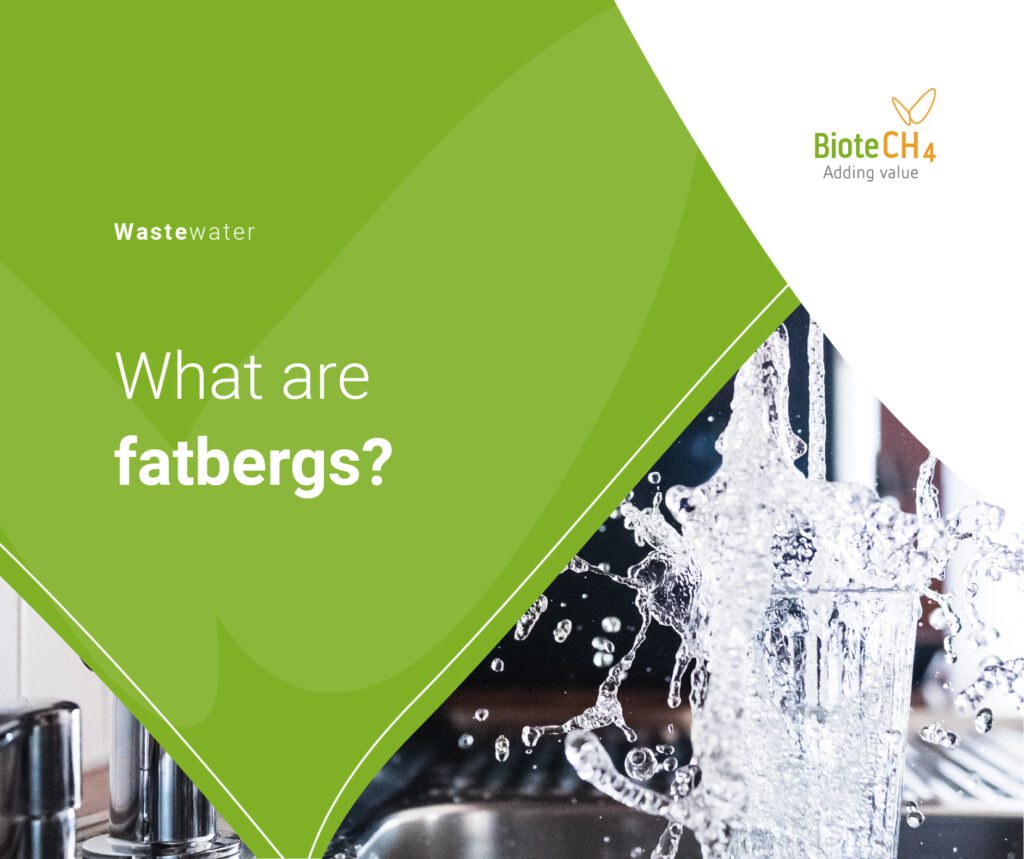What Lies Beneath – Recovering Oil from Wastewater to Reduce Fatbergs
- Commercial
- -
We don’t think twice about any liquid waste we discard into our drains
But, certain liquids should never have been there in the first place. What’s more, these liquids can cause solid problems.
Fats, oils, and grease (FOG) don’t just clog your arteries. They also clog your drains. This has been demonstrated quite clearly by the fatbergs found in the sewers across the UK, like the one in London in 2017 and the other in 2019. Other notable ones have been found in Liverpool, Sidmouth, and Shaftsbury.
Key Points
- Fats, oils, and grease accumulate with 'unflushable' waste to create large, solid, masses called 'fatbergs'
- These then go on to cause problems such as flooding, damage to pipes, and negative impacts on our environment
- Better education of both homeowners and businesses is taking place to limit the occurrence of fatbergs
- Prevention can also be assisted by proper disposal of the waste in question
These locations aren’t the only ones. Southern Water deals with around 20,000 blockages a year, out of which . This, of course, is not counting any blockages encountered by the 12 other Water and Sewerage companies operating in the country.
These fatbergs became famous due to their size – they weighed several tonnes – and it took weeks to clear them out.
At this point, you might be wondering what fatbergs are. Let us explain.
What are fatbergs?
The term ‘fatberg’ is a portmanteau (a mash-up) of ‘fat’ and ‘iceberg’, so, literally, an iceberg made of congealed fat. However, it’s not all just fat. Small quantities of FOG in the wastewater would simply be washed out until they are removed from it in a wastewater treatment plant.
However, add in ‘unflushables’, like wet wipes, sanitary products, dental floss, etc., which are products that are not meant to be flushed, and you get the perfect storm. These items allow fats, oils and grease to hang on and accumulate, slowly building up until they form a mass that is big enough to block the drain or sewer.

To build on the analogy, like an iceberg, a fatberg is formed of tiny particles. Viewed individually, they are small and insignificant – like a snowflake that melts as soon as it hits the ground.
But, as snowflakes accumulate, you get snow drifts. Allow them to build up long enough and you get a solid mass which is huge and difficult to move.
And, like icebergs, fatbergs too lie mostly hidden, but can cause big problems.
Of course, you may wonder how liquids like oils and fats become this solid mass. The thing is, FOG alone doesn’t allow the formation of fatbergs. It takes a combination of calcium, free fatty acids (FFA), FOG, and water.
Calcium binds with fats in a process called saponification to form a soap-like substance that is solid. Water, FOG, and air create an emulsion which is quite thick. These then stick to unflushables, slowly building up over time until they end up creating a blockage in the form of a fatberg.
As you can see, FOG might be liquid when you pour it down the sink drain, but it can undergo a transformation in the drains. Combined with the unflushables, it can create blockages that can be quite damaging.
Why are fatbergs bad?
Flooding
Since fatbergs are a solid mass, which grows with time, they can grow big enough to cause a blockage in the drain or sewer. Sewage lines are designed to transport a certain volume or liquid, based on the population density of the area they are in.
When there is a partial blockage, the volume of wastewater that can pass through goes down. As the size of the blockage grows, eventually, it might reach a point where not enough or no wastewater can pass through.
This results in sewage water coming back up through drains and flooding buildings. If you have wastewater flooding your home, you can’t treat it as a regular flood, as it’s a health hazard. And the damage it might cause will cost you money to fix.
Sewers overflowing can also flood roads, making it unpleasant or dangerous to drive through, depending on how much water there is.
When it floods a commercial area or property, or the roads around it, wastewater could also disrupt business.
Environmental impact
This wastewater, instead of ending up in a water treatment plant as was intended, can make its way into waterways, rivers, ponds, and even the sea. The pollutants in wastewater can then have environmental repercussions.
Faster degradation of drain pipes
Whilst flooding can be a big and visible problem, the other, more insidious, effect of fatbergs is that it causes pipes to degrade more quickly. This means they need to be maintained and repaired more often.
If you’ve ever seen an overflowing drain in the street, it’s likely caused by a full or partial blockage somewhere in the pipes – these are often caused by fatbergs.
This wastewater can then end up in our waterways, ponds, and even the sea, causing harm to the local flora and fauna.
Fatbergs will also cause the pipe infrastructure to degrade, meaning pipes must be maintained and repaired more often.
How can we tackle the issue of fatbergs?
As with every other big problem, it is better to prevent the problem instead of doing damage control. That is why dumping FOG down the public sewer systemby food and catering businesses is now an offence in England and Wales, under the Environment Protection Act 1990: Duty of Care.
Additionally, Section 111 Water Industry Act 1991 also states:
“No person shall throw, empty or turn, or suffer or permit to be thrown or emptied or to pass, into any public sewer or into any drain or sewer, communicating with a public sewer any matter likely to injure the sewer or drain, to interfere with the free flow of its contents or to affect prejudicially the treatment or disposal of its contents.”
In Scotland, Scottish Water has been given the right to ask for compensation for unblocking or repairing any sewer that was blocked or damaged due to a commercial entity pouring FOG down sewers under the Water Resources (Scotland) Act 2013.
Businesses are being asked to consider options like staff training, grease traps, enzymes that help break down FOG, as well as waste oil storage and collection.
As a wastewater & sewerage undertaker, we want to spread the message far and wide that we want to work collaboratively with food service establishments and the hospitality sector and ask them directly about their understanding of FOG and grease management systems.
This education and collaboration will help us manage FOG at source, prevent blockages, floods and pollution and, most importantly, protect the environment and our communities.”
Homeowners are also encouraged to dispose of used cooking oil in the bins rather than down the sink drain. It is a good practice to scrape leftovers out of plates into the bin before washing them, to reduce the amount of fat that finds its way into drains.
Additionally, people are encouraged not to flush anything other than the 3Ps (pee, poo, paper) down the toilet.
However, we still need to deal with some amounts of FOG in wastewater. Smaller fatbergs can be removed with strong jets of water. Larger ones, of course, have to be manually broken down into smaller bits and physically removed. These can then be sent to be anaerobically digested.
Methods of preventing fatbergs
In order to prevent fatbergs from forming, it is important to prevent FOG from entering the drains. That is why commercial establishments that work with food or dairy are required to collect any used cooking oil and dispose of it responsibly.
They are also encouraged to install grease traps, as well as implement operational measures to ensure their drains remain fat-free.
Finally, if some amount of FOG does manage to find its way into the wastewater, that can be removed by using Dissolved Air Floatation (DAF) sludge disposal.
DAF sludge disposal is a method that uses dissolved air to ‘catch’ impurities suspended in wastewater and bring them up to the surface. They float in the form of foamy scum on the surface which can be removed, leaving the wastewater FOG-free.
This method can be used to remove a variety of FOG materials from wastewater. At BioteCH4, we work with, and remove fats from the wastewater of, industries like:
- Food manufacturers
- Breweries and distilleries
- Abattoir and slaughterhouses
- Liquid waste from agriculture
- Bakeries and Dairies
And, this wastewater also helps support our feedstock mix.
If you’re concerned about the amount of FOG in the wastewater your business generates, call us for a chat.
We will not only be able to help you create a waste management and reduction plan, but also help you clean up your wastewater so that it doesn’t contribute to fatbergs in your sewers. We’ll also answer any questions you may have about FOG disposal.



